In the land of fabulous arts and crafts, Oaxaca is king. The rich culture of the region has been brewing for centuries, from the time when the Zapotecs and Mixtecs adorned their temples with sculptures and paintings and their dead with gold and turquoises.
By the second half of the 18th century, Antequera, the former name of the city, had a thriving textile industry and a population surpassing 18,000 people.
Oaxaca City is the capital of the state of Oaxaca (pronounced wah-HA-kah), where you’ll not only find lovely towns but beautiful mountains and lovely beaches, like the ones in Huatulco Bays.
The historic centre of Oaxaca de Juarez (the city’s official name) is a UNESCO World Heritage Site with centuries-old churches and monasteries that are now great museums where you can learn about the arts and traditions of the indigenous population.
The best time to visit Oaxaca is during the dry season, between November and April.
Disclosure: This post contains some affiliate links. If you make a purchase through those links I will earn a commission at no additional cost to you (zero, nada). To check the full disclaimer, click here.
These are the 10 best things to do around Oaxaca City

Table of Contents
Relax at the Main Square (Zócalo) and Stop at the Cathedral of Our Lady of the Assumption

The main square or zócalo is one of Oaxaca’s landmarks for people-watching, under the watchful eye of the celestial court fixed to the façade of the imposing Cathedral.
You can sit in the landscaped square and see the swarm of vendors make their way around, enjoy live music and dances, or have a drink at any of the many cafes.
It’s also a place for protests and demonstrations where you can learn about the issues affecting the local population.
Walk up to the Cathedral and take a closer look at the beautiful details in Cantera stone. You’ll find statues representing archangels, saints, the Holy Spirit, and the Virgin Mary ascending to Heaven, framed by the floral and natural motifs typical of the Baroque style.


It took nearly 200 years to finish it all after construction started in 1535.
Even though the interior isn’t the most ornate, you’ll find some unique details such as the fine-looking inner doors with engraved glass panels. Take a peek at the nice stained glass as well.


Check Out Saint Augustine Church (Templo de San Agustín)

A great example of baroque-style architecture with a central façade displaying a statue of Saint Augustine holding a church in his left hand, flanked by Corinthian columns, and decorated niches all around.
Construction took a long time, starting in 1580 and lasting until 1699.
In 1860, it suffered the same fate as other churches thanks to the Reform Law when the state kicked out the Catholic Church people and it became part of the Institute of Arts and Science of Oaxaca.
In 1893 it returned to the hands of the Church and restoration works ensued.
Inside you can see a Baroque-style altar where you’ll find Saint Augustine again.

Vicente Guerrero 213, Centro
Marvel at the Spectacular Church of Santo Domingo de Guzmán
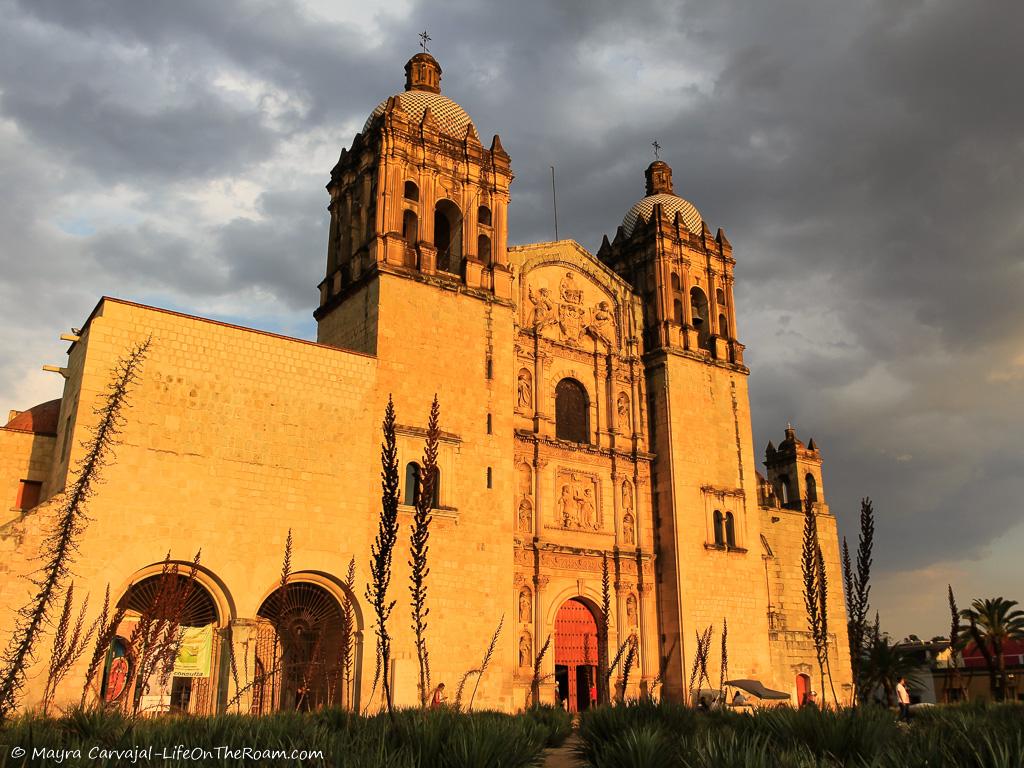
If you only have time to visit one church, this is the one. It’s the most beautiful and ornate, earning through the years the title of “The Jewel of Oaxaca”. The best time to go is in the afternoon when the sunset bathes the façade with a glow.
Commissioned by Dominican friars, construction of this Baroque-style jewel across nearly four hectares started in 1570 and the entire complex, comprising the church, the convent, and the Chapel of the Rosary was completed in 1731.
In 1859 a major change happened. By enacting the Reform law the government told the Catholic Church: I’m taking your buildings!
In 1862, the church and the convent became military headquarters, closing their doors until 1901.
Restoration works started that same year and it took several decades to repair the damage done by years of neglect.
Now you can see it in all its splendor with shiny gold leaf everywhere, 104 medallions with paintings of the Dominican martyrs, 36 paintings with biblical scenes (some date back to 1752), and curious things like the genealogical tree of Saint Domingo of Guzman.



And try not to drag your jaw on the floor when you see the altars.
Calle Macedonio Alcalá with C. de Gurrión
Learn About Nature and Culture at the Oaxaca Ethnobotanical Garden

The walls of the Santo Domingo convent, with its textured polychromy and arched windows offering a discreet peek inside its corridors, enclose this beautiful garden created in 1988. This place is more than the next-door neighbour to the convent, it used to be its orchard.
Even though the convent was completed several centuries ago, you won’t find centuries-old trees here.
Military forces occupied the place from the mid-19th century until the end of the 20th century, leaving nothing of the former garden. Dorms and parking lots replaced corn and herbs, but some structures from the colonial era managed to survive and have been restored: water tanks, pottery ovens, and laundry sinks.



For this reason, the plants and trees you’ll see, native to the state of Oaxaca, are on the young side.
A guided visit to the garden (you must join their tours to enter) goes beyond walking through the hundreds of species you’ll see. Yes, hundreds. Oaxaca is the state with the most biodiversity in Mexico.



You’ll also learn about the cultural significance of the plants since the pre-hispanic era, either as a food source, as raw material to make textiles, as an inspiration for artistic creations, or as a source of healing concoctions.
Jardín Etnobotánico de Oaxaca
Reforma Sur with Calle de la Constitución; Guided tours are conducted Monday to Saturday in the morning (2-hour guided tours in English take place at 11AM); Tour Cost: MXN $100.
Visit the Museum of Cultures of Oaxaca at the Santo Domingo Cultural Centre (Museo de Las Culturas de Oaxaca)

I loved this place! The perfect combination of viceregal architecture, art, history, and unbeatable views of gardens, squares, and mountains.
It all started when the Dominican friars moved to Oaxaca for their evangelization campaign. We need a convent!, they said, and construction started in 1575.
In 1812 the army occupied the building and stayed there during the War of Independence. It wasn’t until 1898 when restoration works started, but armed forces shared the space until 1994.
In 1998 the Santo Domingo Cultural Centre was born among ribbed vaults with beautiful hand-painted decorations on walls and ceilings.



From the corridor arched windows, you’ll enjoy views of the cloisters, of what used to be the convent’s orchard (now the Oaxaca Ethnobotanical Garden), the Santo Domingo church, and the surrounding mountains.


Walk through the rooms to learn about the cultures that have inhabited Oaxaca from 10,000 B.C.: their art and traditions until 1519 and beyond, when the Spaniards became the new rulers of the land and transformed the arts by introducing new materials and techniques in the production of pottery, jewelry, and textiles.
You’ll see many remarkable objects made of clay dating back thousands of years as well as woodworking masterpieces.

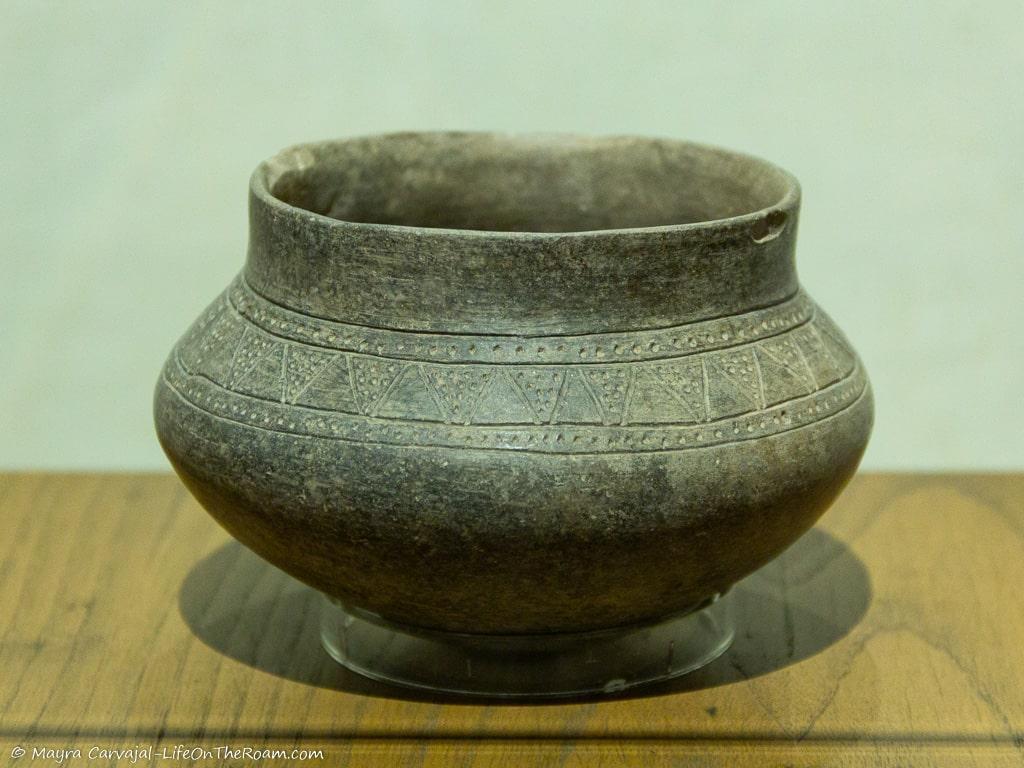



Don’t miss the archeological treasures found on Tomb 7 in Monte Albán showing the high-level skills of the artists and their work with precious metals and stones, used to make jewelry to accessorize the dead.
The journey through the cultures of Oaxaca also includes a view into traditional music, gastronomy, celebrations of the blending of indigenous and Catholic traditions, and the production of mezcal. Cheers!
Calle Macedonio Alcalá with C. de Gurrión; Tue. to Sun.: 10AM-6PM; General admission: MXN$ 85.
Dive in Art and History at the San Pablo Cultural Centre

This is another wonderful cultural centre in Oaxaca City where you go not only for the art on the walls and within the walls, but for the walls themselves and the hundreds of years of history sandwiched between them.
Long before becoming the San Pablo Cultural Centre, Dominican friars built this monastery (the first one in Oaxaca) in 1529 to evangelize the population.
But an earthquake wreaked havoc on the buildings and the friars had to move to the Santo Domingo de Guzmán convent.
Reconstruction works followed. To fund the cost the building was sold in pieces and the owners repurposed their spaces leaving barely any traces of the original monastery.
But after a restoration project commissioned by the Alfredo Harp Helú Foundation, aiming to preserve the historic building, you can see the glory of the old monastery.
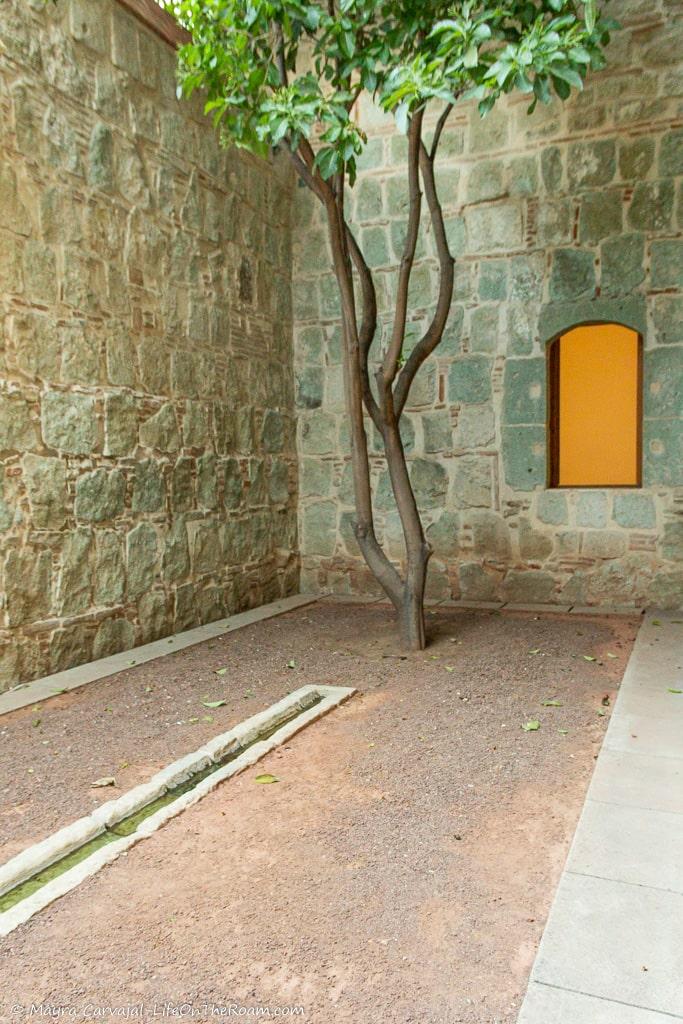


Today you can enjoy cultural activities and exhibits that showcase Oaxaca’s indigenous culture through different media: sculpture, pottery, arts and crafts, music, photography, and others. Check out their workshops for some hands-on learning.
The architectural details are as exquisite as the artwork.
Miguel Hidalgo 907, Centro
Discover the Architecture of Oaxaca by Getting Lost in the Historic Centre

Just walk. Wander along the andadores (pedestrian streets), along the narrow streets, and let the hunt for colour and art take you from one street to the next. You’ll come across many historic buildings with big doors and windows, and pretty wrought iron balconies.


You may even stumble upon performers and enjoy some music and dance. Oaxaca is full of life, it didn’t disappoint.
Savour (and Learn about) the Flavours of Oaxaca
Mexican food is revered worldwide, but food from Oaxaca has its own place in the altar.
You’ll find many restaurants across the city, but one place you can’t miss is the Mercado 20 de Noviembre, where you’ll find many food stalls with traditional street food: tlayudas, tamales, memelas, moles, chocolate, mezcal, quesillo (Oaxacan cheese) will make your day.
For a traditional drink have a sip of tejate, made of corn, cocoa, cocoa flower and mamey seed. I can’t say I didn’t like it, but I’ll say it’s…an acquired taste.
If you’re brave enough try the seasoned and grilled chapulines (crickets) or the maguey worms (I’ve only had them ground in salt with mezcal).
Want to learn how to reproduce some dishes at home? Check out these highly-rated cooking classes:
The Real Traditional Oaxaca Cooking Class: a hands-on experience where you learn how to cook traditional dishes including tortillas (from scratch), moles, tamales, and more. Prepare a 4-course meal while you toast with beer and mezcal.
Learn to cook like a Oaxacan, with a rating of 4.8/5 based on more than 170 reviews.
Are you a vegetarian? You may be interested in this Oaxacan Vegetarian cooking class, with a rating of 4.8/5 based on more than 135 reviews.
Find Inspiration at the Art galleries and Art Markets in Oaxaca
Oaxaca is a fantastic destination for art lovers with many galleries, markets, and art centres to see local arts and crafts. Here are some I loved:
Espacio Zapata Arte Popular

The focus is on graphic art and contemporary pieces. Check out their exhibits and their workshops.
Calle Porfirio Díaz 509, Centro
Andares del Arte Popular
Featuring beautiful creations of local artisans in a beautiful space. Furniture, pottery, textiles, metals, alebrijes, decorative objects, basketweaving, woodwork, masks, you name it. Pure awesomeness.
Andaresdelartepopular.com.mx; Avenida Independencia 1003, Centro. If you can’t wait to get there you can see what they have online in their Amazon store.
Galería 910
The focus is on contemporary art (prints, paintings, etc.), but you can also find jewelry, garments, and textiles.
Macedonio Alcalá 305, Centro
Art Walk and Cacao Delight: spend half-day around Oaxaca with this guided tour visiting art galleries, studios and seeing murals. You can also create your own print. The tour ends with a cacao tasting.
Check out Oaxaca’s art scene, with a rating of 5/5 based on more than 70 reviews.
Taller Artístico Comunitario

Choose from a variety of art workshops (mainly graphic arts) and spend some time checking out their gallery.
Avenida de la Independencia 1306, Centro
Market of Handicrafts (Mercado de Artesanías)
A big market where you’ll find any handicraft you can think of from Oaxaca’s surrouding villages. You can also catch live demonstrations with artisans and cultural activities (dance, music, singing, etc.)
General Ignacio Zaragoza with C. de J. P. García
Explore Oaxaca’s History at Monte Albán Ruins
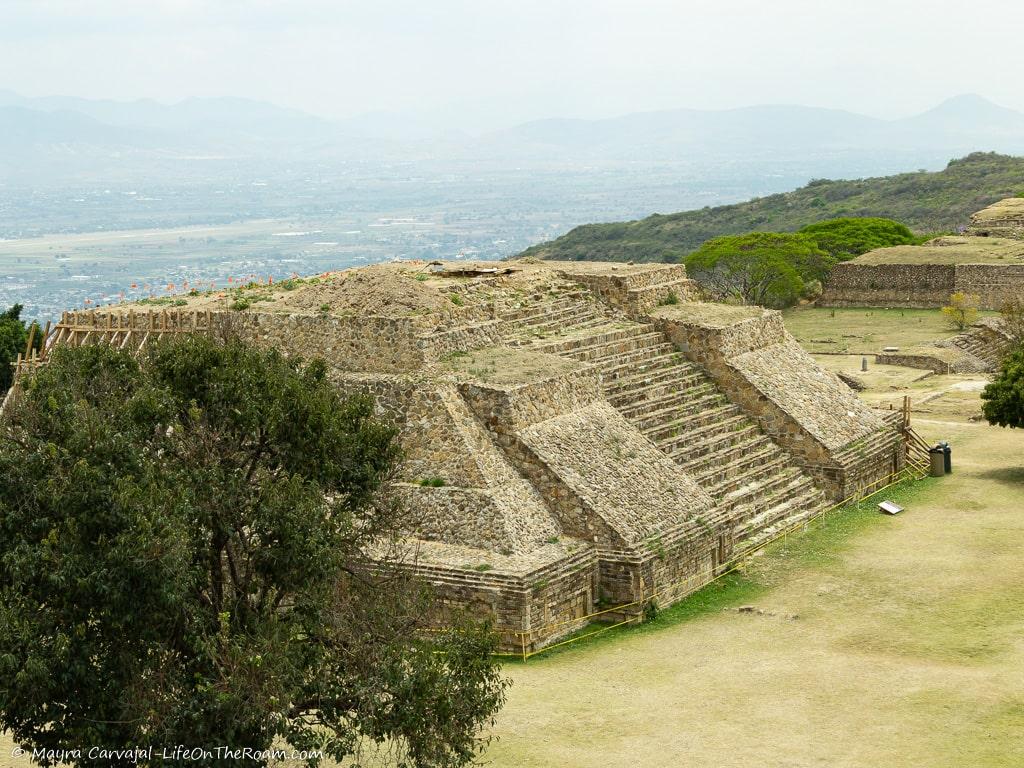
Monte Albán was the biggest pre-hispanic city in the state of Oaxaca that established the relevance of the Zapotec culture, making it the most important archeological site in the area.
Sitting 300 metres above the confluence of the valleys, it offers an awesome view of the surrounding mountains, a walk among ancient temples, and a site museum showcasing interesting findings.
Getting here by public transit from Oaxaca City centre is quite easy. It’s less than 10 kilometres away so you can visit it in a morning (best option) or an afternoon.
Read my blog post about Monte Albán to learn more about the history and all the treasures waiting for you at this UNESCO World Heritage Site.
Take a Day Trip to Hierve El Agua

Hierve El Agua is known as the petrified falls of Oaxaca and it’s one of the most beautiful natural formations in Mexico.
It took thousands of years for the giant stalactites to reach the bottom from the top of the cliff. They’re as impressive as the landscape they belong to.
This gorgeous site is located a little less than two hours away from Oaxaca City, but it’s totally worth the trip.
You can combine it with a visit to other sites, such as the Mitla Archeological site.
Check my blog post about Hierve El Agua to find out how to get there on your own and what can you see.
Oaxaca City will have you humming the tunes of the famous song “Oaxaca de Mis Amores”. You’ll fall in love with its bright colours and its lively streets, buildings narrating the history of the city, and the warmth of its people.
BOOKING FLIGHTS AND ACCOMMODATIONS
Book your flight without losing your shirt
We check Momondo to find great deals to book our flights. Also, check Great Escape: it combines the listings from Expedia, Kiwi, Kayak, (and Skyscanner on the premium service) to find the best airfares.
To find a place to stay for less
Hotwire: the first site I check when we plan to stay at a hotel for a few nights. You can save anything from 20% to 60%. Use the search filter to find what you want and you’ll end up with three listings that match your criteria. You’ll know which one you’ll get after you book. If you can handle a little bit of uncertainty you can score big savings.
House Sitting: you take care of people’s pets and house for free while staying for free. It’s the closest thing to experiencing a place “like a local”. But it comes with responsibilities… Are you an animal lover? It may become your new way to travel.
To get travel insurance
SafetyWing: travel medical insurance that gives us peace of mind knowing that we’re covered in case of emergency. It’s convenient, affordable, and suitable for digital nomads who spend a long time outside their home country.
Check the full list of travel resources on my Resource Page for more options and savings

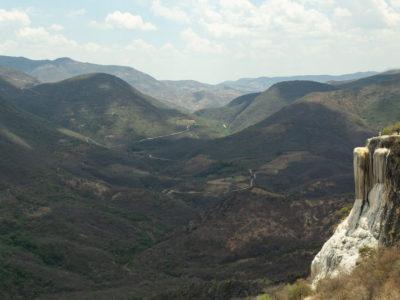

Oaxaca looks interesting, I love the garden.
The tours of the garden are very informative and you also learn about the culture.
Man… I’m tempted to book a trip just to take you up on all of this! Every place looks stunning, and I would be thrilled to visit. Thank you for the suggestions!
It’s a beautiful and lively place with delicious food!
This city looks gorgeous! One of ethe things COVID killed for a lot of us was travel. For me, my finances still haven’t recovered fully, so travel for me is still a bit of a pipe dream right now. This post made me feel like I could be here exploring at my own pace with you. Thanks so much for sharing!
Thanks for reading! Maybe Oaxaca can be your first overseas trip after recovering. Another great thing about this city is that is more affordable than other destinations and it’s just as gorgeous. 🙂